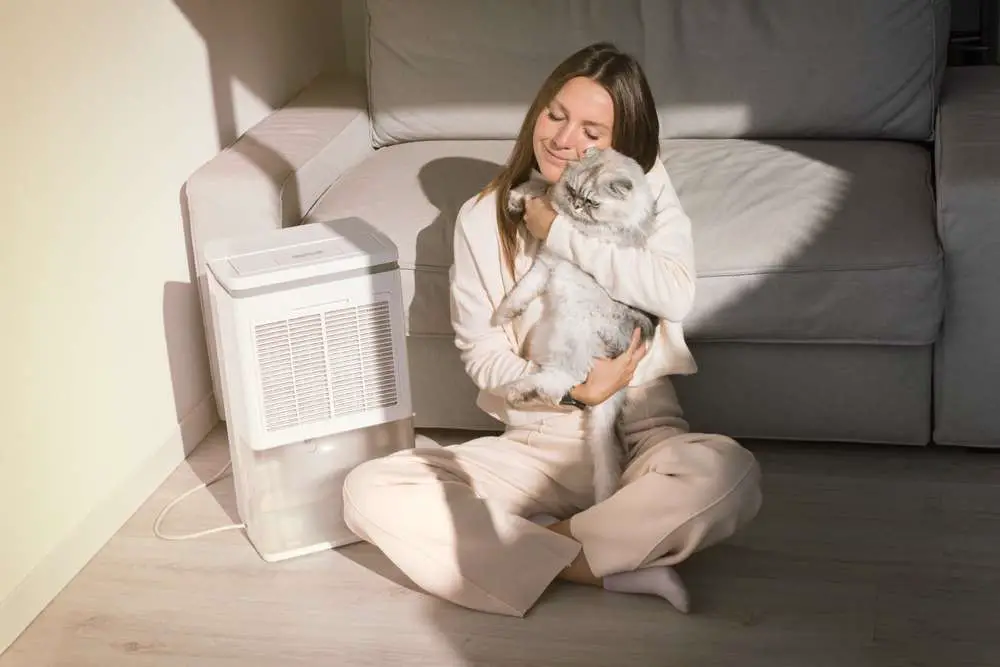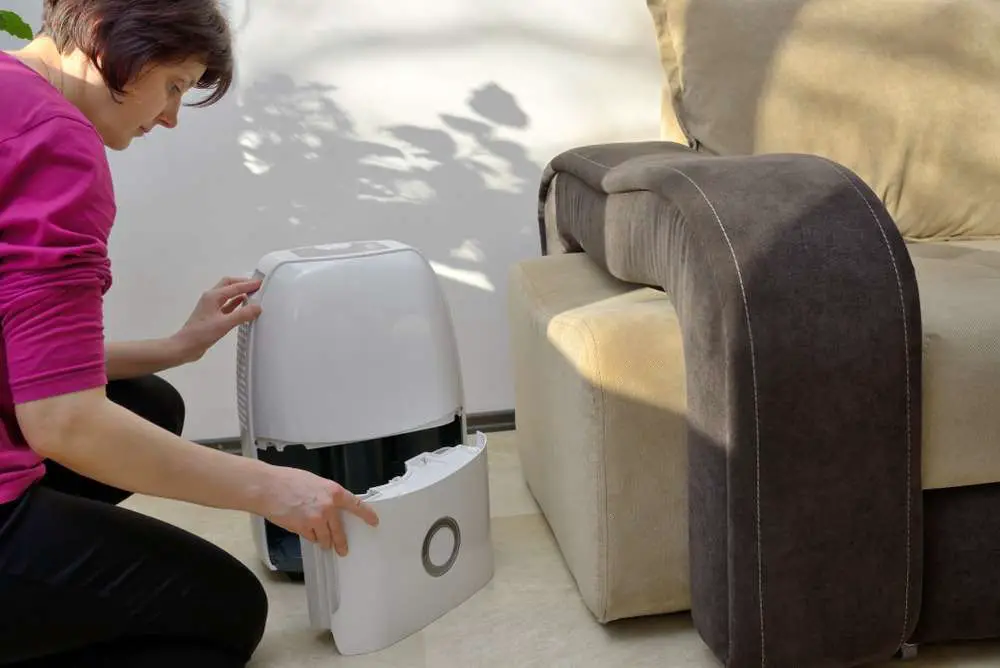- You are here:
- Home »
- Blog »
- Dehumidifiers »
- 2 Essential Checks When Your Dehumidifier is Blowing Cold Air
2 Essential Checks When Your Dehumidifier is Blowing Cold Air

Dehumidifiers, like all appliances, are not problem-free. They need regular maintenance to function. Otherwise, it will give you problems. One common problem is the device blowing cold air. So, what does it mean when your dehumidifier is blowing cold air?
A dehumidifier typically blows cold air due to a broken compressor or the evaporator coils icing up. A well-functioning unit should release warm air: since the mechanism within the device warms the air before it is released.
Let’s look at how a dehumidifier functions.
Table of contents
How does a dehumidifier work?
The primary function of a dehumidifier is to remove moisture from the air. Most units available in the consumer market use the process of refrigeration to do that. The process cools the air, turning the moisture into liquid. The water then passes along into the collection tank.
The refrigeration process
- Air is sucked in through the grille of the device by an electric fan.
- It passes through cold coils containing a coolant. The coolant cools off the air and turns its moisture into water. The liquid then drips off the pipe and down to the tank.
- The air is now moisture-free. It passes through heated coils, taking it back to its original temperature.
- At last, it releases into the room through another grille.
The process shows that the unit heats the air before it’s released back into the room. Therefore, the device blows warm air rather than cold. The compressor also produces and releases heat, slightly impacting the room’s temperature.
So, how do you check if your dehumidifier is blowing cold air? Simple, press your hands gently against the grille of the unit. You can tell if the air it lets out is warm or cold. If you think that you can tell by checking the thermostat, you typically can’t.
The cold air released by the unit will likely only drop the temperature down a degree or two. Most units aren’t powerful enough to drastically impact a room’s temperature.
The 2 checks you should perform when your dehumidifier is blowing cold air
A dehumidifier blows cold air if either the compressor or evaporator coils are not functioning as they should. Let’s look at why and what to do to fix them.
1. Check if the compressor is broken
The compressor plays a vital role in dehumidifying the air. It circulates the coolant throughout the coil, ensuring condensation happens. A broken compressor will result in the air passing through the device without getting rid of the moisture.
The moment you notice your device giving off cold air is when you need to check the compressor. The dehumidifier will emit a clicking sound when turned on. Another sign you need to look out for is the amount of water collected in the tank.
Since the compressor is vital to the condensation process, water will no longer drip down to the tank. So, you don’t necessarily need to take the unit apart to determine an issue with the compressor.
You should get your device checked immediately if you think you have a broken compressor. Delaying it will put more stress on other parts of the unit.
2. Check if the evaporator coils are frozen
Dehumidifiers can freeze up. If you place them in a room colder than 65° Fahrenheit (18° Celsius), it will often frost up after some time. However, there are some units designed to work in colder spaces such as the basement or crawl space.
If your compressor is working fine, the cold air the unit releases could be due to frozen coils. The coils have a constant flow of coolant, which may freeze at lower temperatures. Once this happens, they fail to carry out the condensation process. So, the air that travels through the unit is not dehumidified and will be slightly colder than before.
Getting the coils to function again is simple. You need to move the dehumidifier into a warmer room and let it warm up and thaw for a while. Once the coils unfreeze, they will function again. But, putting it back into the same cold conditions will lead to the coils freezing up again. So, we recommend you get a unit designed for colder rooms and use this unit elsewhere.
Tips to ensure smooth functioning of your dehumidifier

Here are tips to ensure your dehumidifier functions well and doesn’t give you too many problems, such as blowing cold air:
- Pick a spot that allows air to flow freely into and out of the dehumidifier. The location doesn’t necessarily have to be in the middle of the room. But make sure the device is at least 5-6 feet(1.5 – 2 meters) away from any wall or major object like furniture.
- Empty the tank once it is full. Otherwise, the unit will shut off.
- Keep the device clean. Clean out the filter, tank, and grilles every other month.
- If your dehumidifier is in a room cooler than 65° Fahrenheit (18° Celsius), take it out from time to time. This will prevent the freezing of the coils.
Final thoughts
A dehumidifier blowing cold air is more common than you think. You will need to determine whether it is due to a broken compressor or frozen coils. In either case, you will need to have the issue resolved. Otherwise, your device will run up your energy bill without dehumidifying the room.
About the Author Belal
Belal Rizvi enjoys writing about home improvement and do-it-yourself projects. He is an avid learner of the mold removal and dehumidifiers industry and provides insightful information about it to the readers.
